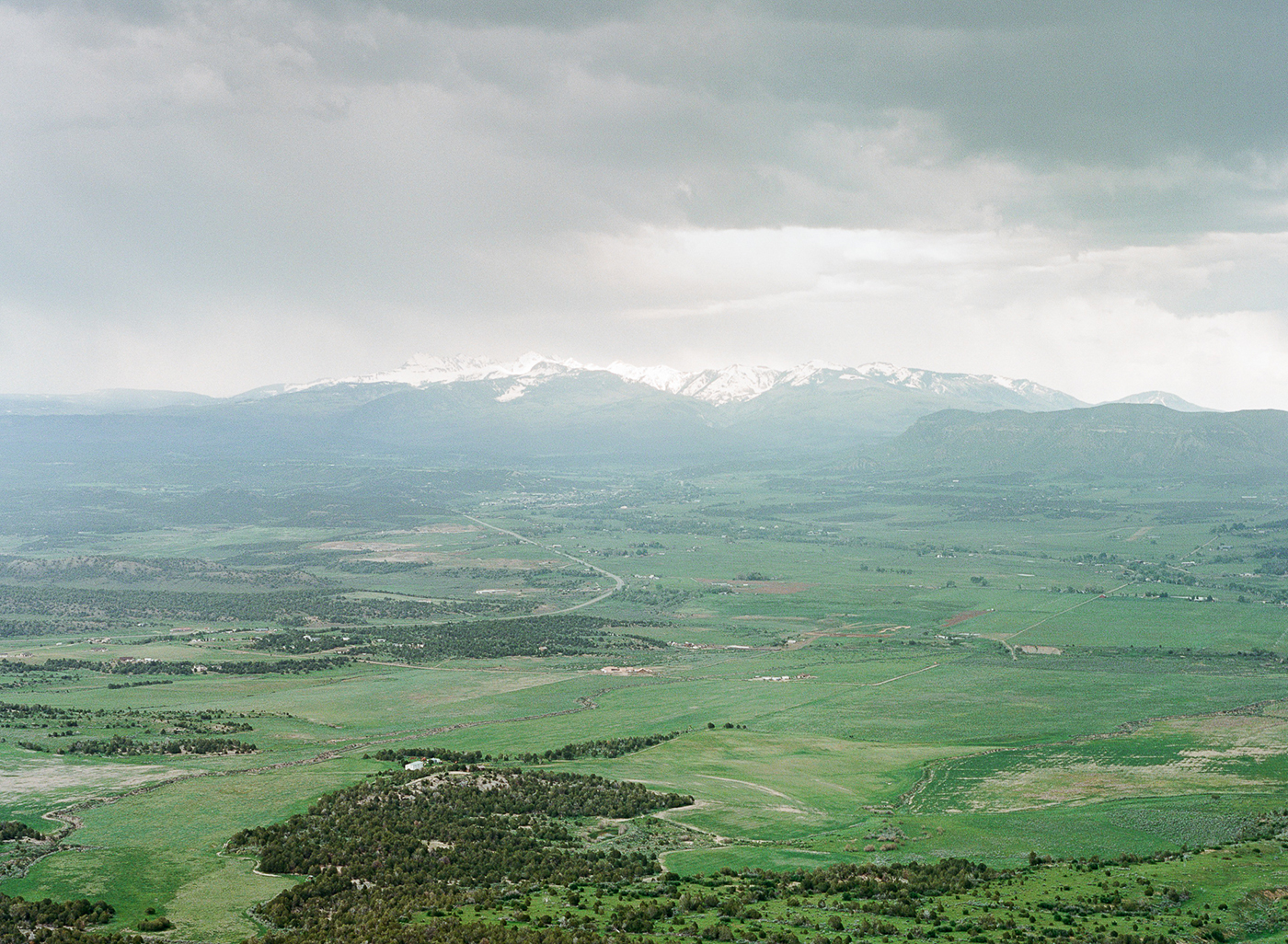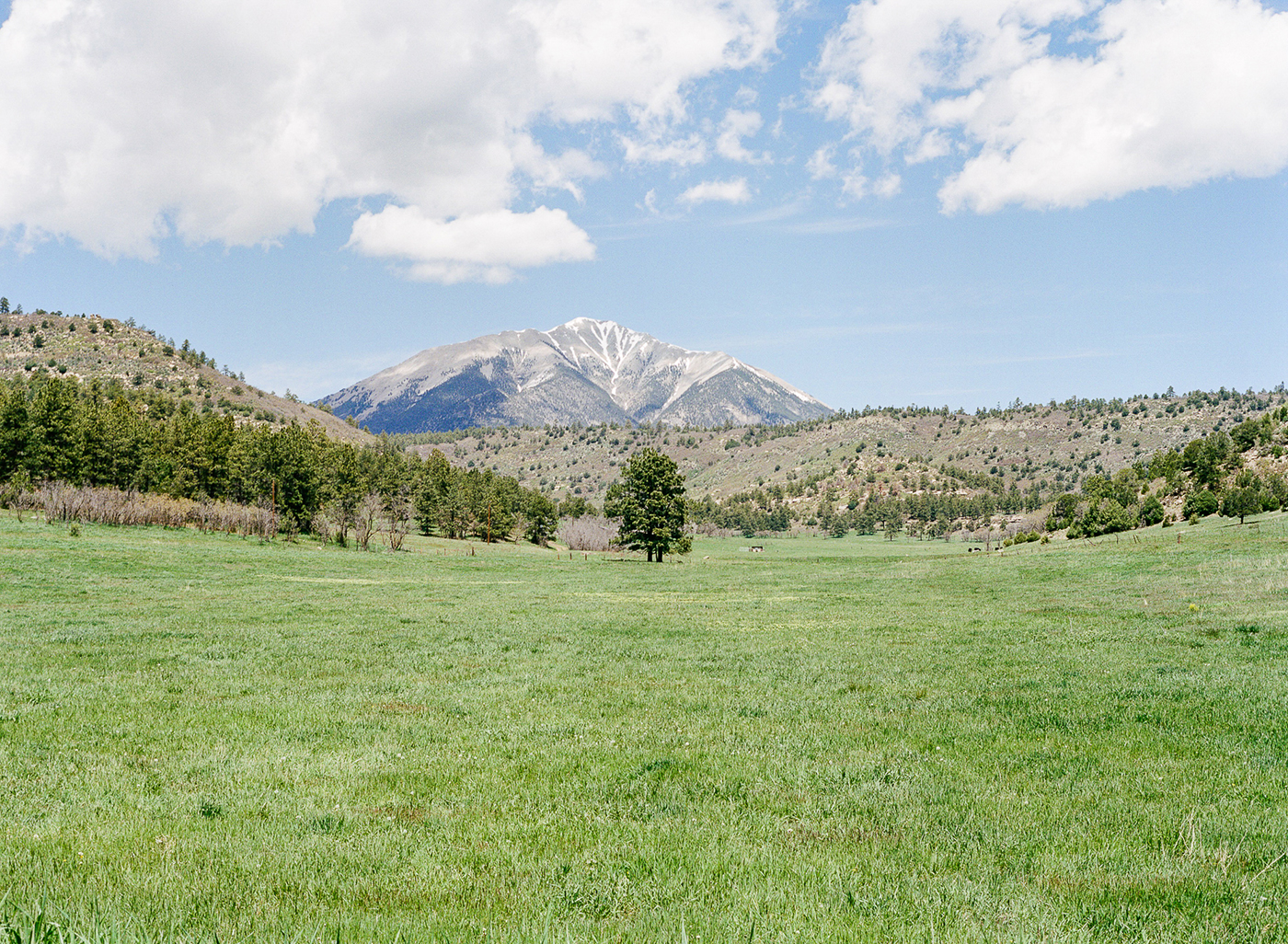As we pine for the open road, here is a dose of inspiration, via a week spent traveling through rural southern Colorado. The goal was to explore areas of the state less typically on the tourist path, to rely on printed maps, instead of GPS, to get lost and see what I’d find.
Each evening I’d consult my maps, plotting the next days route and doing my best to turn two hour trips along highways into six hour journeys over back roads. Roughly, I headed south from Denver, then west, across shifting landscape and through to the desert region of the southwestern corner of the state.
From Denver, after gathering luggage and securing my rental car, I quickly ditched the highway and headed towards the mountains. The petrified redwoods and walking paths of Florissant Fossil Beds National Monument offered a fascinating look into the prehistoric history of the area—and a solid chance to stretch my legs. From there, I followed a former mining railway which is now a quiet stretch of dirt road which plunges from the mountains through steep grades and switchbacks towards the valley below. Arriving in Pueblo, I crashed at Station On The Riverwalk, a boutique hotel crafted from what was once the town’s police station and jail.

The next few days took me to the San Luis Valley, a 122 mile long stretch of land which is the headwaters of the Rio Grande river. Near the center of the valley is Zapata Ranch, a 103,000 acre working bison and cattle ranch owned by The Nature Conservancy and managed by Ranchlands. The ranch is stocked with 2000 bison and 300 cattle, which roam the grounds. Guests can lend a hand with daily ranch operations, such as mending fences and moving livestock on horseback. Morning and evening meals are served family style, allowing for friendships to build among fellow visitors.

From the ranch, I chose to explore Great Sand Dunes National Park and Preserve, home to North Americas largest tallest sand dunes. The dunes occupy 30 square miles, pressed against the edge of the Sangre de Cristo mountains, the tallest reaching over 700 ft. Each day, when the weather permits, a select number of backcountry camping permits are released, allowing camping within the dune field. The hike in is a slog—two miles of trodding slopes of sand to get into the approved camping area. But when there you can pitch a tent anywhere you’d like, and are rewarded by an otherworldly sense of calm courtesy of the towering dunes and unrivaled stargazing.

Following the sandblasting, Joyful Journey Hot Springs Spa is an ideal way to recover and recharge. The property offers standard hotel rooms, as well as yurts and tipis, and three pools of naturally heated mineral waters. Nearby Crestone, the self described “New Age Religious capital of the world” is a great stop to get your head spun. The town, which has approximately 200 permanent residents, is home to dozens of spiritual centers—Buddhist, Hundu, Zen, Christian, you name it. Just a few minutes hanging at the town’s health food store, Elephant Cloud Market, will get you in on the vibe—the cashier told me without blinking an eye that she moved to the area because of experiences she had with extraterrestrial lifeforms.
Leaving Crestone and the Sangre de Cristos behind, I headed West, chasing thunderstorms which blotted the sky with inky clouds. Pagosa Springs was a veritable metropolis compared with the open expanses of the previous days. The town sits along a section of the San Juan River and is warmed by a series of sulphur springs—including a “mother spring” which is the world’s deepest geothermal hot spring. The Springs Resort & Spa has 24 different pools, adjusted to varying temperatures and open 24 hours a day for uninterrupted soaking needs. MEE, a counter-order fast casual spot just outside of town offers excellent Hmong cuisine—a solid respite from the more typical cowboy fare found in many of the surrounding towns.

Near Cortez, a couple of hours farther west, hail storms prevented touring the Pueblo cliff dwellings of Mesa Verde National Park. Though a lazy meal at La Casita De Cortez melted the chill of the unseasonably cool weather. From there a day of meandering drives and hikes through Canyons of the Ancients National Monument led into the sandstone desert of the Four Corners region.

Weary from sun and hours on the road, I settled in at Willowtail Springs, a 60-acre eco retreat in Mancos. Operated by artists Peggy and Lee McCoy, the resort features a number of cabins and outbuildings, an artists studio and private lake, all connected by landscaped pathways and joyfully patrolled by their dog, Beau Jangles. It was one of the most peaceful spots I’ve ever stayed, and a perfect close to a week of exploring which barely tapped the vast richness of the region.


















